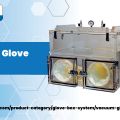Analytical Balance Precision
Original Source:https://www.writerscafe.org/writing/globallabsupply/2178358/
We are surrounded by masses of different forms. However, in order to measure mass, we have a small list of devices that we can use. Furthermore, when it comes to measuring small mass it narrows down to the balances.
Analytical balances are highly precise balances used in laboratories. These balances are used to measure mass. Fitted with an enclosed measuring pan, these devices can easily avoid the influences of dust and air currents. Other features or applications like vibration resistance, data transfer, automation, and capacity range options also come with several models of analytical balances.
How are Analytical Balances different from Precision Balances?
You can choose the ideal balance for your laboratory from a range of different balances.
Each of the balances exhibits different sets of features and recommendations to use them. Therefore, if you are willing to purchase a balance, you need to carefully think about what you want and research all the available devices that will offer you the best possible results. Among the most essential points, you must be clear about the application that will be measured, the maximum capacity needed, and the accuracy needed to measure them.
Here we will compare analytical balances with the precision balances:
Analytical Balance:
Analytical balances have been designed to measure small mass with extraordinary precision. Analytical balances are highly sensitive devices and can easily measure up to four decimal places to the right of the decimal point. Thus, they are extensively used in quantitative chemical analysis. These balances are so sensitive that they are susceptible to air currents, which can affect the measurement.
They also contain a draft shield, which helps in eradicating the problems of inaccurate readings. Therefore, you must keep a stable space for your balance to get rid of environment-induced interferences. Besides, you will also need frequent calibration and monitoring for these devices. Most balances come with the automatic internal motorized calibration weight. Furthermore, you can also external weights for calibration purposes. These balances are quite common in the chemical and pharmaceutical industries.
Precision Balance:
Precision balances are another type of balances that are capable of measuring up to 200g. Often referred to as top-loading balances, precision balances cost less in comparison to the analytical balances.
Precision balances play the role of semi-analytical balances and thereby, seem to be less accurate than the standard analytical balance. These balances promise the user readability up to three decimal places to the right of the decimal point. Besides, they are not much affected by the changing environmental conditions and can give readouts in seconds.
Therefore, if you require a highly accurate and efficient device, then you should go for the analytical balances for laboratory purposes. An analytical balance can help in the measurement of the accuracy of 0.0001 to 0.00001g. However, if you don’t need that amount of accuracy in your work, then opting for a top-loading device is wise enough because they can measure the accuracy of 0.001g.
There are numerous other lab balances used for several purposes like:
- Equal Arm Balance
- Platform Scale
- Spring Balance
- Torsion Balance
- Triple-Beam Balance
Using Analytical Balances
If you confused regarding how to operate an analytical balance, then check below and perform them one by one:
- You need to use a level indicator. This will help you in checking the balance.
- You need to ensure that the bubble is in the centre. If it is not, then try to adjust it by twisting the feet.
- Now, you have to turn the balance on. Next, you need to press the ‘tare’ button and wait for a ‘*’ or a similar symbol to appear on one of the top corners. You will now be able to read the mass of 0.0000 g.
- Now, you have to open the door and ensure that the container is placed in the centre of the scale.
- Then, you need to close the door and wait for it to stabilize.
- Next, you need to press ‘Tare’. This will help in resetting the mass to zero if you do not want to measure the mass of the container.
- Here, you need to remove the container and place the object that you need to weigh on the balance.
- In the end, wait for 5 to 10 seconds before you see the reading. If you have an unstable reading, the reason may be static electricity.
How can you make your readings accurate in Analytical Balances?
The Analytical balances are super sensitive devices the readings of which are affected even by a slight motion of air or other environmental factors or changes in the environment. If you observe these facts you can also make your readings accurate in no time.
- Make sure you keep the device in a proper location.
- Check for any electrostatic charge present.
- Try calibrating the device scale according to its location.
- Try to develop good housekeeping practices.
- Keep your balance clean.
Author Bio:
Globallabsupply.com offers each type of lab equipment including Analytical Balance Precision. They supply Analytical Balances as well as give you enough guarantee periods to fix issues suddenly if there is anything.
Other articles and publications:
Articles and publications of other companies:
- +1 (714) 754-6660
- 2106 N Glassell St, Orange, CA, 92865, USA
- www.globallabsupply.com/Chairs-Stools-s/1825.htm





